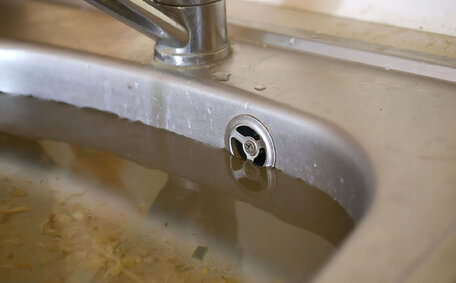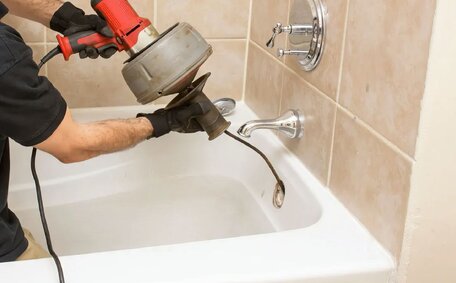Introduction to Choosing a Gas Supplier in NSW
When it comes to choosing a gas supplier in New South Wales, there are a few key factors to consider in order to find the best deal. Comparing different plans across multiple providers is crucial to ensure you are getting competitive usage rates, reasonable supply charges, and flexibility with billing and payment options.
Understanding your household’s gas usage needs and habits will help determine the right type of tariff, whether single rate, off-peak, or controlled load.
Carefully reviewing all terms and conditions before signing any contract is advised. Major suppliers in NSW include Origin, AGL, EnergyAustralia and Red Energy.
Existing gas customers have the choice to stay with their current retailer or switch to a new provider. Visiting government comparison websites like Energy Made Easy allows consumers to easily compare available plans.
The goal is to find an affordable gas plan that aligns with your household’s unique requirements. With some research and comparison shopping, NSW residents can secure the best gas deal for their needs.
Compare Usage Rates and Supply Charges
When comparing gas plans, it’s crucial to look at both the usage rates (per unit of gas consumed) and supply charges (daily connection fee). Usage rates can vary significantly between providers - even for the same type of tariff. Lower usage rates will benefit households with high gas usage.
The supply charge is a fixed daily fee just for being connected to the gas network. This component makes up a larger proportion of the bill for low usage customers. Some retailers offer discounted supply charges or guaranteed rates for 1-2 years.
To find the best deal, calculate the projected annual cost of plans using your estimated yearly gas usage. This will account for differences in both usage rates and supply charges. Also confirm any conditional discounts, price changes, contract terms, and other fees.
Online comparison tools like Energy Made Easy allow you to enter your usage and location to compare total cost across retailers. Knowing the breakdown of rates vs charges for each plan enables an informed decision when choosing a gas supplier in NSW.
Fixed vs Variable Rates
When choosing a gas plan, customers can opt for either a fixed or variable rate. With a fixed rate, the usage rate stays the same for the duration of the contract term, usually 1-3 years. This provides price certainty and protects against potential rate hikes.
Variable rates fluctuate based on factors like market conditions and are reviewed quarterly or monthly. They may start out lower but can increase at any time. Upside is there’s no lock-in contract, and rates could also go down.
While fixed rates provide more certainty, they are not necessarily cheaper long-term. While fixed rates provide more certainty, they are not necessarily cheaper long-term.
Run the numbers based on your gas usage and compare projected costs of each. The right option depends on your budget and willingness to take on potential rate fluctuations.
Time of Use and Controlled Load Tariffs
Time of use and controlled load are two types of variable rate gas tariffs to consider. This pricing structure rewards consumers who can shift gas usage to off-peak times.
With time of use tariffs, the per unit cost varies based on the time of day and season. Peak times when most households use gas come with higher rates, while off-peak times have lower rates.
Controlled load tariffs are for specific gas appliances like hot water systems, space heaters and pool heaters. By allowing the retailer to remotely control these appliances and restrict usage during peak demand times, consumers can access lower rates. This helps reduce demand on the gas network during peak times.
Carefully estimating your gas usage during peak versus off-peak times and considering controlled load options where applicable, could yield savings. Time of use and controlled load tariffs add complexity but with some scheduling and load shifting, tech-savvy households can benefit from the lower variable rates during off-peak periods.
Read the Fine Print of Contracts
When reviewing gas plan contracts, it is essential to read the fine print to fully understand the terms and commitments. Pay particular attention to sections about price changes, contract expiry, exit fees, conditional discounts, and any other potential extra charges.
Many fixed rate gas contracts include conditional discounts which expire at the end of the contract term. This means rates can increase substantially after the initial discount period. The contract may also auto-renew onto a more expensive variable plan, so check cancellation policies.
Exit fees are common if you want to switch to a new retailer before the contract expires. These can range from $20 to over $300 in some cases. Make sure you are comfortable being locked-in for the full term before signing.
Some additional fees to look out for include late payment fees, paper bill fees, payment processing fees, and credit card surcharges. Reading the fine print ensures no surprises when it comes time to pay your gas bill.
Consider Your Usage Habits
When selecting a gas supplier, it is important to consider your household’s usage habits. High gas usage homes may benefit more from plans with lower usage rates, even if supply charges are higher. Low usage households could get better value opting for lower supply charges instead.
Look at when you use your gas appliances most. If weekday peak times are low use for your home but weekends see higher usage, a time of use tariff with cheaper weekend rates could be suitable. Or if your hot water system can run on a controlled load overnight, those Off-Peak rates may provide savings.
Understanding your usage profile - when and how much gas your household actually consumes - allows you to identify the most cost-effective gas plan based on your unique habits. Matching your real-world usage to the right tariff and pricing structure is key to maximising savings.
Compare Billing and Payment Options
When selecting a gas supplier, it helps to compare the billing and payment options available. When selecting a gas supplier, it helps to compare the billing and payment options available.
Pay-on-time discounts reward customers who pay bills by the due date. Payment frequency options can include weekly, fortnightly, or monthly.
Consider setup costs for payment methods like direct debit versus BPAY or credit card - some retailers charge card fees. Also compare how much advance notice is required to change payment dates. Having some flexibility makes it easier to align with your cashflow.
Electronic billing is more environmentally friendly and usually cheaper than paper bills in the mail. But customers foregoing emailed bills may miss important updates. Compare online account management options to pick a provider with a platform you find easy to use.
Understanding all the billing and payment choices available from different gas suppliers in NSW allows you to select a setup that best suits your household needs.
Check for Discounts and Incentives
When comparing gas suppliers, be sure to look for available discounts and incentives that can lower your overall costs. Many retailers offer new customer discounts of 10-20% off usage rates for the first 1-2 years. There may also be pay-on-time discounts of 5-10% for setting up direct debit payments.
See if any loyalty programmes are offered for ongoing discounts. Conditional discounts like guaranteed rates for agreeing to contracts over 1-2 years may also be advertised. Welcome credits, sign-up rewards, referral bonuses and gift cards are other types of incentives offered.
Compare any bundled deals as well - some gas companies give discounts if you sign up for both electricity and gas. Just make sure the usage rates are competitive after intro discounts expire. Leveraging these savings opportunities allows you to maximise value when choosing a gas supplier.
Option to Stay or Switch Suppliers
When it comes to choosing a gas supplier in NSW, existing customers always have the option to stay with their current provider or switch to a new one. There is no obligation to remain loyal to one retailer.
By comparing plans from other gas suppliers in the area, you may be able to find a better deal. New customer discounts and incentives could make switching worthwhile, as long as exit fees from your current provider aren’t too high.
But if you’re satisfied with your current rates, customer service and features, you can certainly renew or continue service with your existing gas company. Just be sure to run a quick comparison check before re-signing any contracts to confirm you’re still getting competitive rates.
Assessing your options to either stay put or switch gives you the power to make the best choice. Don’t hesitate to explore alternatives, but staying loyal can also pay off if you’re happy with your current gas supplier.
Major Gas Retailers in NSW
There are several major gas retailers that provide service across New South Wales:
- Origin Energy - Australia’s largest energy retailer with over 4 million gas and electricity customers nationwide.
- AGL Energy - Serving over 3.6 million customer accounts across NSW, Victoria, Queensland, South Australia and Western Australia.
- EnergyAustralia - Provides gas and electricity to around 2.4 million homes and businesses across NSW, Victoria, Queensland, South Australia and the ACT.
- Red Energy - A subsidiary of Snowy Hydro, supplying gas to both residential and business customers primarily across NSW and Victoria.
These four major retailers collectively hold over 80% of the residential gas market share in NSW. Other gas suppliers in the state include smaller brands like Alinta Energy, Simply Energy, Lumo Energy and Powershop.
When comparing gas plans in NSW, it’s advisable to get quotes across these major brands along with checking any smaller independent retailers to find the best usage rates and overall value. Knowing the major players in the market makes it easier to shop around.
How to Compare and Switch Providers
Switching gas providers in NSW can help consumers secure a better deal, but it does require some research and planning. Here is a step-by-step guide to compare and switch suppliers:
- Gather details on your current usage and bills to estimate your annual costs based on tariff rates.
- Use comparison sites like EnergyMadeEasy to see rates from other providers. Enter your usage to compare projected annual costs.
- Shortlist 2-3 plans with the lowest overall prices and carefully read all terms and conditions.
- Call the provider to clarify contract details and confirm any new customer discounts.
- Choose a competitive plan and sign up online or over the phone.
- Provide consent for the new retailer to manage your switch. This includes cancelling your current contract.
- Update automatic payments and billing details with the new provider.
- A final metre read will occur on the switch date to close your old account.
- Expect a letter confirming your successful switch within a few billing cycles.
With some preparation and research upfront, switching gas suppliers can be a relatively smooth process while securing major savings. Just be sure to compare all costs and terms before making the switch.
Government Comparison Tools
The Australian government provides objective comparison tools to help consumers make informed choices when selecting a gas supplier in NSW. Websites like Energy Made Easy allow you to enter your postal code and estimated usage to see a side-by-side breakdown of plans available in your area.
Energy Made Easy is run by the Australian Energy Regulator (AER) to promote transparency in the energy market. The independent comparison service is free for consumers to use with no obligations. Information provided is impartial and not influenced by retailers.
Key plan details on Energy Made Easy and other government comparison sites include usage rates, supply charges, discounts, contract terms, fees and other costs. These tools take out the legwork of having to gather this data across multiple providers.
Leveraging independent government resources gives NSW households confidence they are comparing all options when choosing or switching gas suppliers. Accessing transparent pricing and plan information saves time and money.






